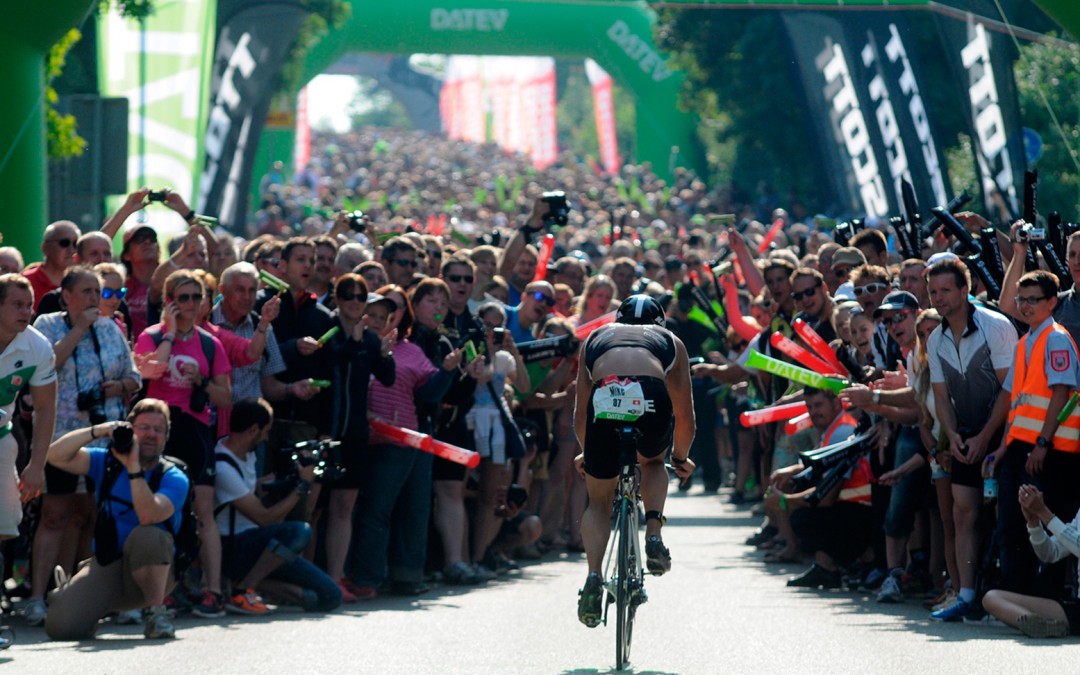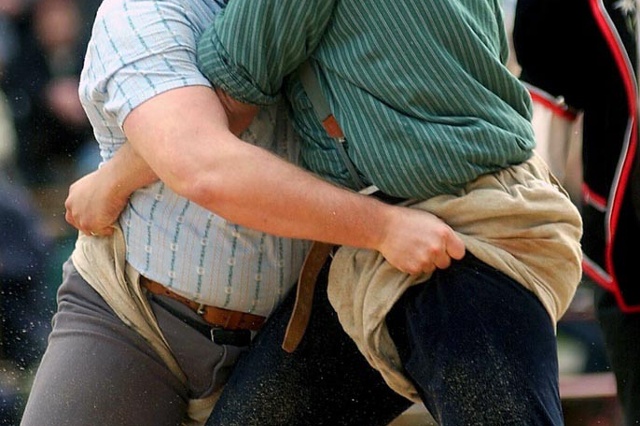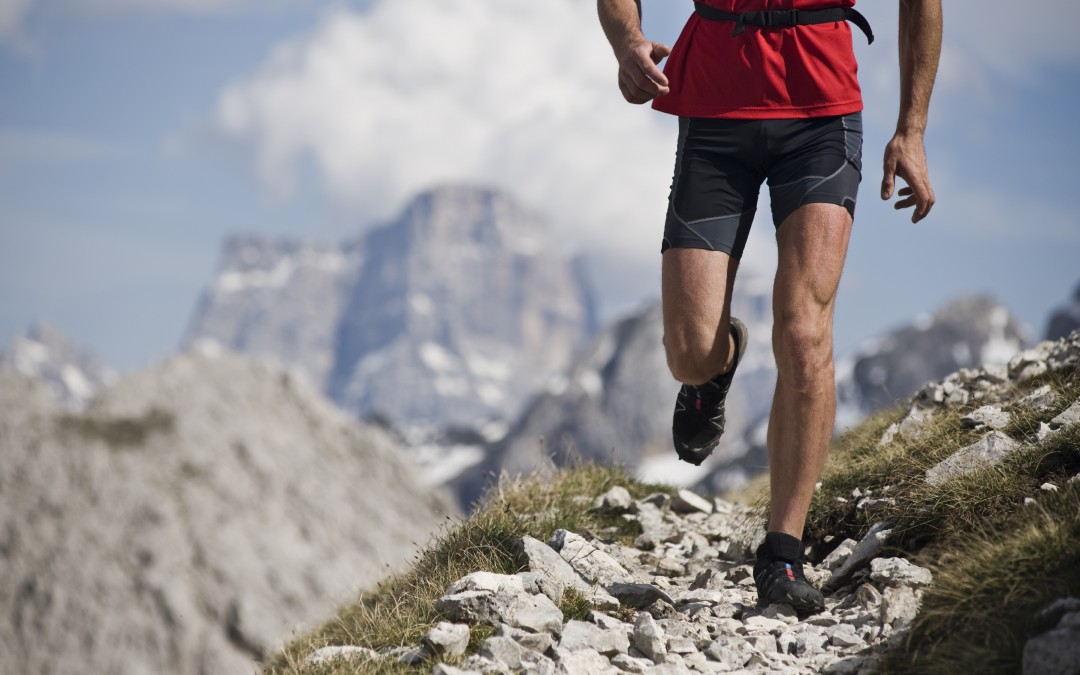
by Safesport ID | Jun 15, 2015 | Events
The distance is the Ironman distance, even though the race is not part of the official Ironman series History The race has been held since 1990 on the Ironman distance and since 1984 also on short distance. It was formerly part of the Ironman series, until 2001. It has been held independently from WTC since 2002 with the name of Challenge Roth. These days it is known as DATEV Challenge Roth and it is probably the most important Ironman distance Race in Europe with over 4,000 participants. The Course The first part of the race, the 3.86 km swim event, takes place in the Rhine–Main–Danube Canal around 10 km outside Roth. The subsequent 180.25 km bike course uses a two-lap course on the countryside, the course is mostly relatively flat with a tougher hill once per lap. The final marathon run goes once around a course with several turning points. Mostly the course goes on the same road after each turning point, so competitors meet each other. A major part of the course is along the Rhine–Main–Danube Canal. The finish is in central Roth. World records set in Challenge Roth Men’s record: Jan Frodeno, 2016 – 7:35:39 Women’s record: Chrissie Wellington, 2011 – 8:18:13 Challenge Series Today DATEV Challenge Roth is a successful business model and mother race of the Challenge family. With over 40 Challenge races all over the world it is clear that organizer Felix Walchshöfer never regretted his decision to cancel the contract with WTC in 2002 and create his own Ironman race under the name of Challenge Roth....

by Safesport ID | Jun 4, 2015 | Athletes
“Running is all about being in nature, in the mountains and forests. There’s so much freedom to be had and the best time is being in the mountains, where the clock and the world outside don’t count. Mountains are simplicity, freedom and responsibility — everything that I love!” Emelie Tina Forsberg (1986) is a Swedish athlete that has burst onto trail running scene like a breath of fresh air. She is a European and world Skyrunning champion and describes herself as a ‘lover of the mountains’. “I grew up on the east coast of Sweden,” she says. “There are just small hills there so I’m more of a forest girl really. But nature has been my playground since I was a kid.” She is mainly based in the city of Tromso (Norway) but if you are around Chamonix (France) maybe you can meet her coming back from her daily training around the Mont Blanc. Although Emelie has always loved running, she only started to take it more seriously from the age of 20. “Running doesn’t have to be hard,” she adds. “Just go out and explore and have a good time.” Forsberg has since been crowned the 2012 Skyrunning world champion and won a string of races including Transvulcania, Ice Trail, Pikes Peak, Zegama… At the 2013 skyrunning championships in Italy she left with three individual medals — two gold and one silver. She took gold again at Matterhorn Ultraks and the future surely promises more. Running and the mountains aren’t Forsberg’s only loves. She also lists baking among her hobbies and her website is full of recipes for...

by Safesport ID | Jun 3, 2015 | Amazing Sports
From herdsman’s pastime to national sport. Schwingen is very popular in Switzerland and has experienced an upsurge in recent times. History Schwingen is an ancient sport that has been around for a very long time. Schwingen’s origins are hard to place an exact date on. The first Alpine shepherd’s festival at Unspunnen in 1805 marked a revival of the sport of Schwingen at a time when Switzerland was suffering under French rule. The aim of this festival was to explicitly strengthen the Swiss national consciousness. In the 19th century, Swiss wrestling was introduced to the cities through wrestling festivals and by sports coaches. Hence, from this original herdsman’s and farmer’s pastime a Swiss national sport was created. Schwingen used to give the men of one valley a chance to test themselves against those from elsewhere. The classic test was on the Brünig pass, where wrestlers from central Switzerland would meet those from the Bernese region to see who was the strongest, The rules of schwingen Competitors wear special burlap shorts over their trousers with a slit at the back that allows the opponent to grip the belt. Originally, these were the trousers they wore every day, just rolling them up for the fight. The contest involves one round lasting 10-12 minutes. The winner is the one who throws his opponent onto his back with both shoulder blades touching the ground without losing his grip on his opponent’s shorts. The Federal Wrestling and Alpine Games Festival is the country’s largest wrestling event and takes place every three years. It consists of eight rounds of wrestling over two days. Schwingen? Forbidden!...

by Safesport ID | Jun 2, 2015 | Adventures
The recent development of Fatbikes opened a new era on Antarctica history. A few mad men and women have already conquest the South Pole riding a bike and more will follow soon. These are the adventurers that have tried get there on wheels so far: Helen Skelton (UK, 1983) Helen is a television presenter and actress. In 2012, she became the first person to reach the South Pole using a bicycle. The bike was custom built for her trip, with 8-inch-wide tyres. She also used skis and a kite to help her pull a sled containing 82 kg of supplies. She covered 329 miles by kite ski, 103 by bike and 69 by cross-country ski. Eric Larsen (USA, 1971) Eric Larsen is Polar adventurer known for his expeditions to the North Pole, South Pole, and Mount Everest. In December 2012 made the first attempt to do an expedition solely by bicycle to the South Pole. After covering 175 miles, one quarter of the distance to the South Pole, Larsen abandoned his attempt and biked 160 miles back to Patriot Hills Maria Leijerstam (UK, 1978) On 27 December 2013 Leijerstam became the first person to cycle from the coast of Antarctica to the South Pole. Leijerstam’s achievement was criticized for excessive motorized support. She had a team truck carrying her gear and allowing her to rest in the warm truck. Juan Menendez Granados (Spain) Juan started his bicycle and ski expedition at Hercules Inlet in December 2013 and finish on January 17, 2014. Juan traveled the full distance without any resupplies. Burton claims that Juan rode his bike less than...

by Safesport ID | May 29, 2015 | Training
1. TRAIN WITH DIFFERENT TYPES OF SHOES Repetitive motions can lead to overuse injuries. Changing up your running shoes on every training sesion will keep you from striking the same way. Experiment with different types of shoes, from racing flats and hybrid city-trail shoes to strong trail runners. 2. TRAIN FOR TRAILS Trail running takes a different skill set than jogging on roads. You might think the only way to get good at running on trails is to run on trails, but a lot of us don’t live in the mountains. If you train in the city, Jump curbs or little fences, run on cobblestones and take any little trail you find. Break up your strides so you’re landing on your feet differently, mimicking the hazards of trails. 3. WORK HARD ON YOUR WEAKNESSES Even the best runners have room for improvement. Find your own weaknesses by running with other people, whether it’s a race or with a local running club, then focus on improving, whether it’s climbing, descending, sprints, or endurance. Once you become good at one thing, there’s always something you can work to improve on. 4. KEEP YOUR EYES ON THE TRAILS Don’t wear sunglasses while running on very technical trails. Dappled light can distort depth perception. Focus 3 meters ahead of you on the trail and make sure you lift your feet on every stride. 5. COMMIT TO A RACE A race will give you something to focus on, an opportunity to be part of the running community, and a way to celebrate your training. Even if you are not competitive, it is very cool...

by Safesport ID | May 22, 2015 | Athletes
Javier Gómez Noya (1983) is the winner of four ITU Triathlon World Championships, holds three ITU Triathlon World Cup titles, and won the Silver medal for Spain at the 2012 Summer Olympics in men’s triathlon. He has also won world titles for Ironman 70.3 and XTERRA Triathlon. Gómez took up triathlon at the age of 15 after previously playing football and competing in swimming. However his career suffered a setback in 2000 when a routine medical test by the Consejo Superior de Deportes (CSD) revealed an “abnormal heart valve“, leading to a six-year battle between Gómez and the Spanish sporting authorities regarding his right to compete internationally. He initially won this right in November 2003, but he was not selected for the 2004 Summer Olympics and in 2005 the CSD banned him from international and domestic competition until February 2006. In the nine years from 2002 to 2010, Gómez took part in 57 ITU competitions and achieved 54 top ten positions, among which are 23 first place finishes. In 2003 and in 2008, Gómez was ITU Triathlon World Champion (both under-23 and Elite categories respectively in 2003). In 2007 and 2009 he was the Elite European Champion. He finished second in the World Championships in 2007 and was the runner up in 2011 ITU Sprint Distance Triathlon World Championships. At the 2008 Summer Olympics in men’s triathlon Gómez was among the pre-race favourites to win. With 300 meters to go in that race, Jan Frodeno was the leader of a group made up of Gómez, Athens 2004 Silver medallist Bevan Docherty of New Zealand, and Sydney 2000 Gold medallist...










